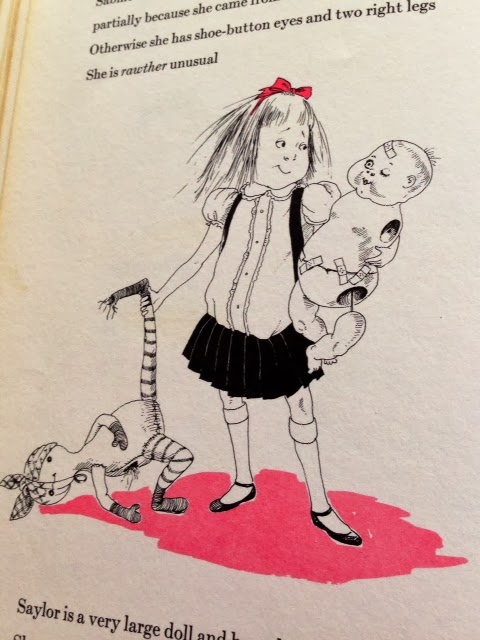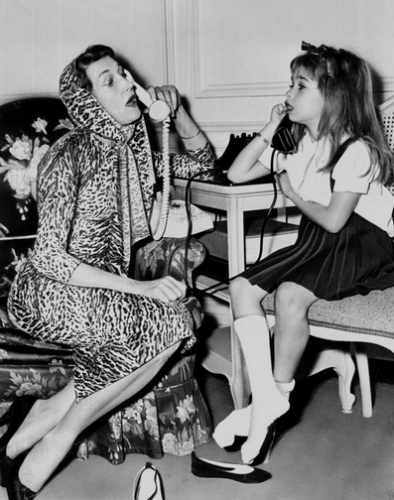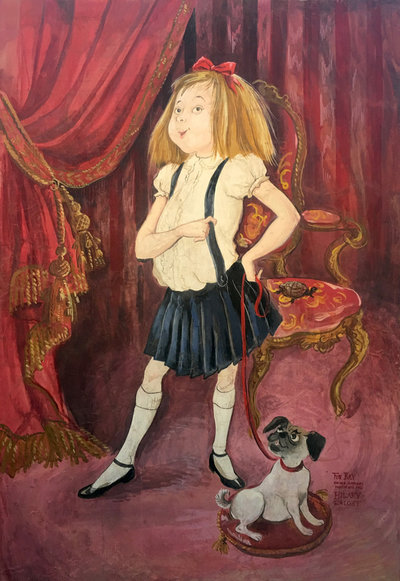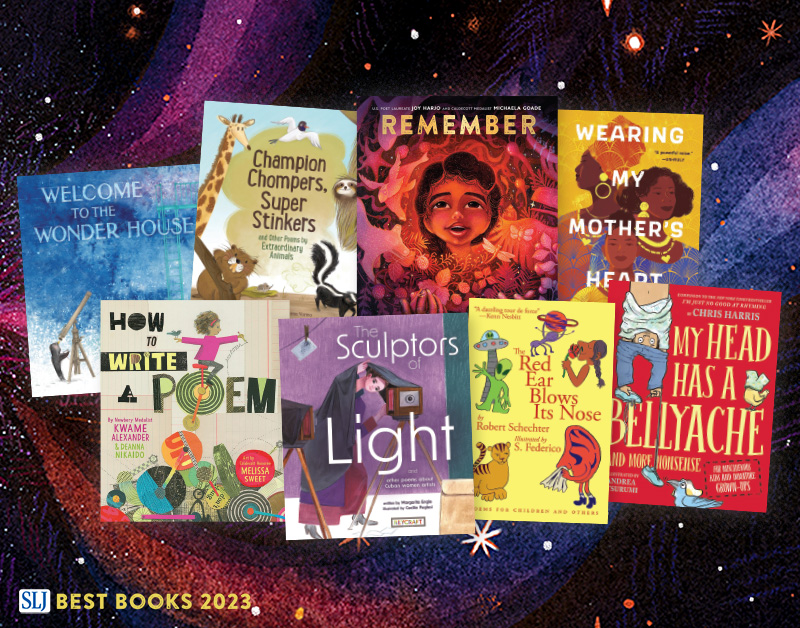Funny Girl, Funny Face: Fanny Brice and Eloise

For someone who never grew up with Eloise in her life, I sure as heck have learned a lot about that little Plaza demon over the years. For me, Eloise is the gossipy gift that keeps on giving. From rumors involving dead cats, to the heist of the original portrait from the Plaza, to her incredible creator and the life she led, there is very little about Eloise that is not interesting. And, hey, you may not like her books, but darned if you find them dull.
For all this, I was fairly certain that I’d plumbed the Eloise well dry. I own the Kay Thompson biography. I’ve read the interviews with Hilary Knight. I even have a Funny Face poster (“Think pink!”) in my bathroom. I would have wagered that there was little more to talk about on the manner. Eloise is Eloise. Case closed. Shut the book. Good night everybody, try the fish.
ADVERTISEMENT
ADVERTISEMENT
And then . . . I discovered something new.
I’m a faithful podcast listener. I am particularly fond of the ones that make me interested in the subjects that bored me to sleep in school. Science and History were never my strengths, but in the hands of podcasts like Radiolab and Stuff You Missed in History Class they can be positively enthralling. So it was that recently I saw that SYMIHC had a two-part episode on Fanny Brice.

For someone who edited the middle grade anthology Funny Girl, you would think I knew everything there was to know about Ms. Brice. After all, isn’t Funny Girl the name of the Barbara Streisand musical about Fanny’s life (with some significant flourishes, of course)? If you have not seen the film, I confess that I saw it for the first time about five months ago. It’s one of those musicals so chock full of famous songs that every single time a new one comes up you find yourself saying, “Oh! That’s from THIS show?” And while the adaptation takes some pretty big liberties with Ms. Brice’s life (let’s just say her husband wasn’t exactly Omar Sharif) it gets a couple key points right. Fanny was a hustler who learned early on that if she was going to be successful she was going to have to rely on her smarts rather than her looks. Her preferred weapon was comedy. She was a quick wit and a stellar performer. From the moment she started, she did well. In spite of the fact that she was pouring her money down the black hole that was her second husband, she had a good head for figures (which is to say, her mom, who handled her money for a long time, had a good head for figures) and pretty much died at a ripe old age, pretty much at the top of her game.
But humor is a funny thing. What folks in the past found hilarious wouldn’t necessarily fly today. I’m not just talking about race and ethnic jokes (and sadly she trucked in those more than she should have) but also basic humor. A witticism can last for centuries. A gut-buster that gets a guffaw is a different matter entirely. So it is that Fanny’s most popular character, without a doubt, was Baby Snooks.

Never heard of Baby Snooks? I’m not surprised. Here’s the gist of the joke: Fanny dresses up like a little girl and does a little girl voice.
That’s it.
So this was how she made her money. For a long time, particularly in her circuit days, this brought the house down. And canny creature that she was, when Fanny got too old to do the whole dressing-up-like-a-toddler schtick (what’s cute when you’re in your 30s gets real old in your 50s) she did Baby Snooks on a radio show right up until her death.
Very nice, you might say, but what the heck has that got to do with Eloise?

ADVERTISEMENT
ADVERTISEMENT
Well, here’s where we depart from history into speculation, I’ll admit. Now, we know that Kay Thompson wanted to have a career like that of Fanny Brice. It makes sense that she knew of her. You don’t have a famous woman of comedy out there without people being aware of you. And in many ways, Thompson and Brice had a lot in common. Neither considered herself a typical beauty and both used their exceeding talents to overcome this “problem”. Both did it on their own, charming the world. But Kay, according to Sam Irving in Kay Thompson: From Funny Face to Eloise, “didn’t have Fanny’s distinctive voice or range.” Now Thompson existed after Brice’s rise, and Brice eschewed television after her film career went basically nowhere. Thompson probably would have loved more television and film opportunities, had she been offered them.
But let’s back it up a bit. Remember when I told you how famous Fanny’s Baby Snooks character was? Well, what do we know about the origins of Eloise? The standard story is that Eloise began her life as a character that Thompson performed in her nightclub set. She’d put on this little girl voice and say rawther ridiculous things like, “Sometimes I like to comb my hair with a fork.” It was, as it was for Brice, a big hit. But anyone seeing Thompson’s version would have realized that she was taking Brice’s idea and giving it a kind of weird sophistication it had lacked before. Baby Snooks all grown up, if you will. Throughout her life, Brice was desperate for class. The entire allure of her second husband Nicky was possibly based on the fact that when she visited his bathroom for the first time she fell in love with its elegance and determined that he was the man for her. I could find no evidence that she ever knew of Thompson’s character, but if she had, she probably would have considered it a slightly updated version of her own.

I’m not the first person to make this connection, obviously. In a New York Review of Books piece called Eloise: The Feral Star (such a good title) April Bernard connects the same dots then carries them farther. She writes, “She may always, in fact, have envisioned her character, like Fanny Brice’s Baby Snooks, as a kind of slapstick vaudeville turn, or a slightly naughty Shirley Temple.” Later she says, “Eloise stems directly from the tradition of comic vaudeville stars pretending to be children,” a tradition of which I was only dimly aware. But since 90% of my cultural references come from The Simpsons, I remember clearly a Krusty the Clown scene where he insisted that he was an artist before the camera panned back to reveal him in a little boy’s sailor suit demanding a “bigger lolly”.
And so Eloise became a book. In a different era, it’s possible that Brice would have done just as Thompson did and turned her own character into a picture book creation. One wonders how she would have reacted if it had proved to be even more popular than she was. When Thompson realized she was eclipsed by her character, she pulled all but the first Eloise book from publication and sat on them for years. But for all that Brice could be a bit kooky, I can’t see her going this route. I think if she’d seen Baby Snooks get that kind of love she would have thoroughly enjoyed its ascent. And she probably would have laughed herself all the way to the bank.
Funny women. Funny book.

Filed under: Uncategorized
About Betsy Bird
Betsy Bird is currently the Collection Development Manager of the Evanston Public Library system and a former Materials Specialist for New York Public Library. She has served on Newbery, written for Horn Book, and has done other lovely little things that she'd love to tell you about but that she's sure you'd find more interesting to hear of in person. Her opinions are her own and do not reflect those of EPL, SLJ, or any of the other acronyms you might be able to name. Follow her on Twitter: @fuseeight.
ADVERTISEMENT
ADVERTISEMENT
SLJ Blog Network
One Star Review, Guess Who? (#211)
Kevin McCloskey on ‘Lefty’ | Review and Drawn Response
Notable NON-Newbery Winners: Waiting for Gold?
The Seven Bills That Will Safeguard the Future of School Librarianship
Take Five: Newbery Picks, Part Two
Gayle Forman Visits The Yarn!
ADVERTISEMENT








Thank you for bringing Eloise back. It would seem important to discuss Fanny Brice’s Jewish identity. Most readers may know about that, but they may not realize that Kay Thompson, Eloise’s creator, was also of partly Jewish heritage, although she was ambivalent about discussing that fact:
https://forward.com/sisterhood/376395/eight-jewish-things-you-didnt-know-about-eloise/
I don’t know that about Kay Thompson’s heritage, though I knew Fanny’s. Excellent link!